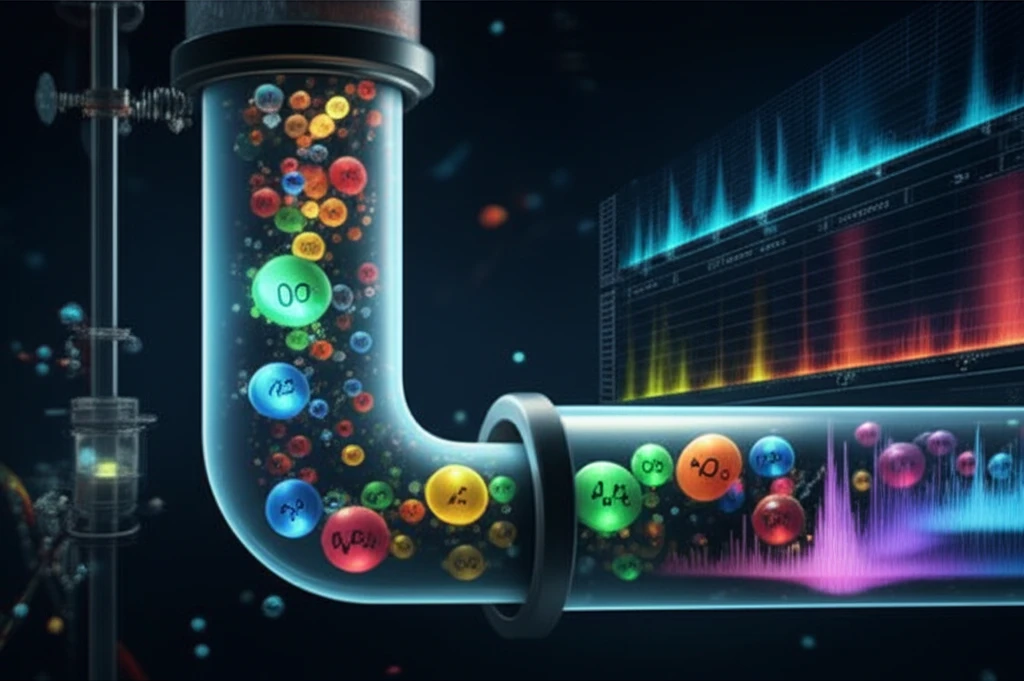
Unlock Metabolite Secrets: How HILIC-NMR and Isotope Tagging Revolutionize Analysis
"A cutting-edge approach combines advanced chromatography and isotopic labeling to identify crucial metabolites, even at low concentrations, transforming our understanding of health and disease."
The ability to accurately measure small molecules in biological samples is key to understanding the body and disease. Scientists are constantly looking for better ways to identify and measure these metabolites, which can act as indicators of health and disease. This is where metabolomics comes in, offering a detailed snapshot of the body's chemical processes.
Nuclear Magnetic Resonance (NMR) spectroscopy has long been a staple tool in metabolomics. It's known for being accurate and non-destructive. However, NMR struggles with sensitivity, making it hard to detect all the metabolites present, especially those at very low concentrations. This limitation can make it difficult to get a complete picture of what's happening in a biological sample.
To overcome these limitations, researchers have combined NMR with other techniques, such as chromatography. This combination helps to simplify complex samples before NMR analysis. One such approach involves Hydrophilic Interaction Chromatography (HILIC), which is particularly good at separating polar metabolites. This article explores a new approach that combines HILIC with isotope tagging to boost the detection and identification of specific metabolites, opening new doors for biological research.
HILIC-NMR and Isotope Tagging: A Powerful Combination

The study highlights a method that combines two-dimensional Hydrophilic Interaction Chromatography (HILIC) with isotope-tagged NMR to identify carboxyl-containing metabolites in human urine. This approach leverages the separation capabilities of HILIC and the enhanced detection offered by isotope tagging. By tagging metabolites with 15N-ethanolamine, researchers can selectively target and identify carboxyl groups, even at low concentrations.
- Isotope Tagging: Metabolites are labeled with 15N-ethanolamine, which selectively binds to carboxyl groups.
- HILIC Separation: The labeled sample is then separated using two-dimensional HILIC to isolate compounds based on their polarity.
- NMR Analysis: The separated fractions are analyzed using 2D HSQC NMR to identify the tagged metabolites.
New Avenues in Metabolite Research
The research demonstrates the effectiveness of combining HILIC separation with isotope tagging for identifying metabolites in complex biological samples. This method not only improves the detection of low-concentration metabolites but also enhances the accuracy of metabolite identification.
By improving metabolite identification and quantification, this approach opens up new avenues for research in various fields, including biomarker discovery and personalized medicine. Identifying unique metabolic signatures can help in the early diagnosis of diseases and the development of targeted therapies.
While this study focuses on urine samples, the same approach could be applied to other biological fluids and tissue samples. As technology advances, combining HILIC-NMR with micro-coil NMR probes could further improve the sensitivity and detection limits, allowing for even more detailed metabolic profiling.
